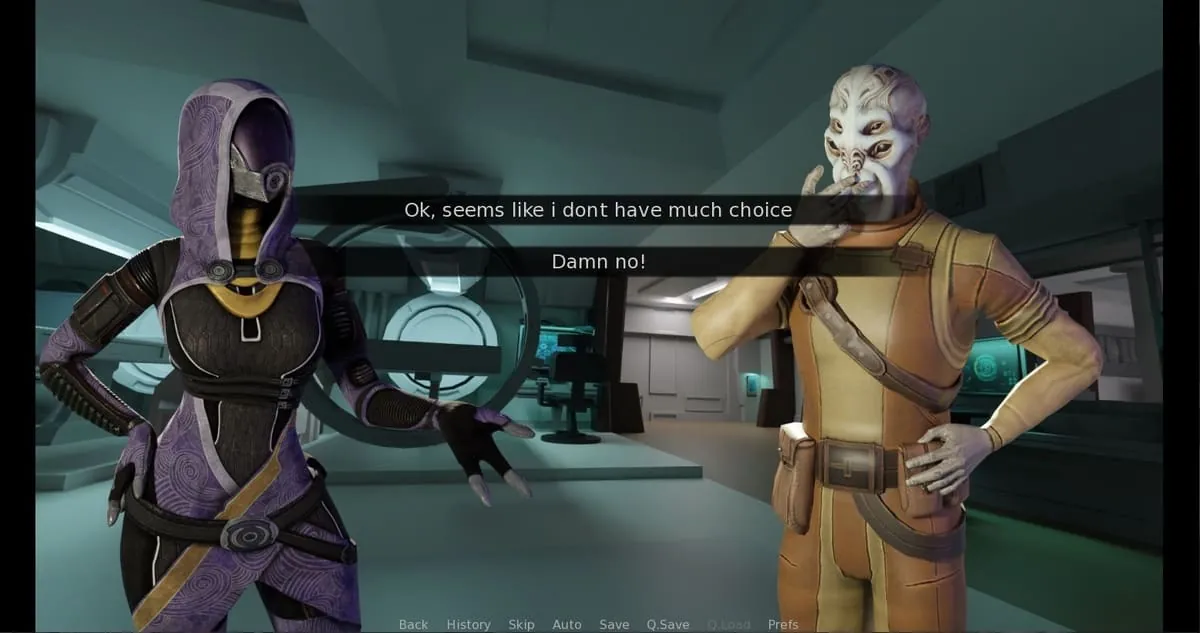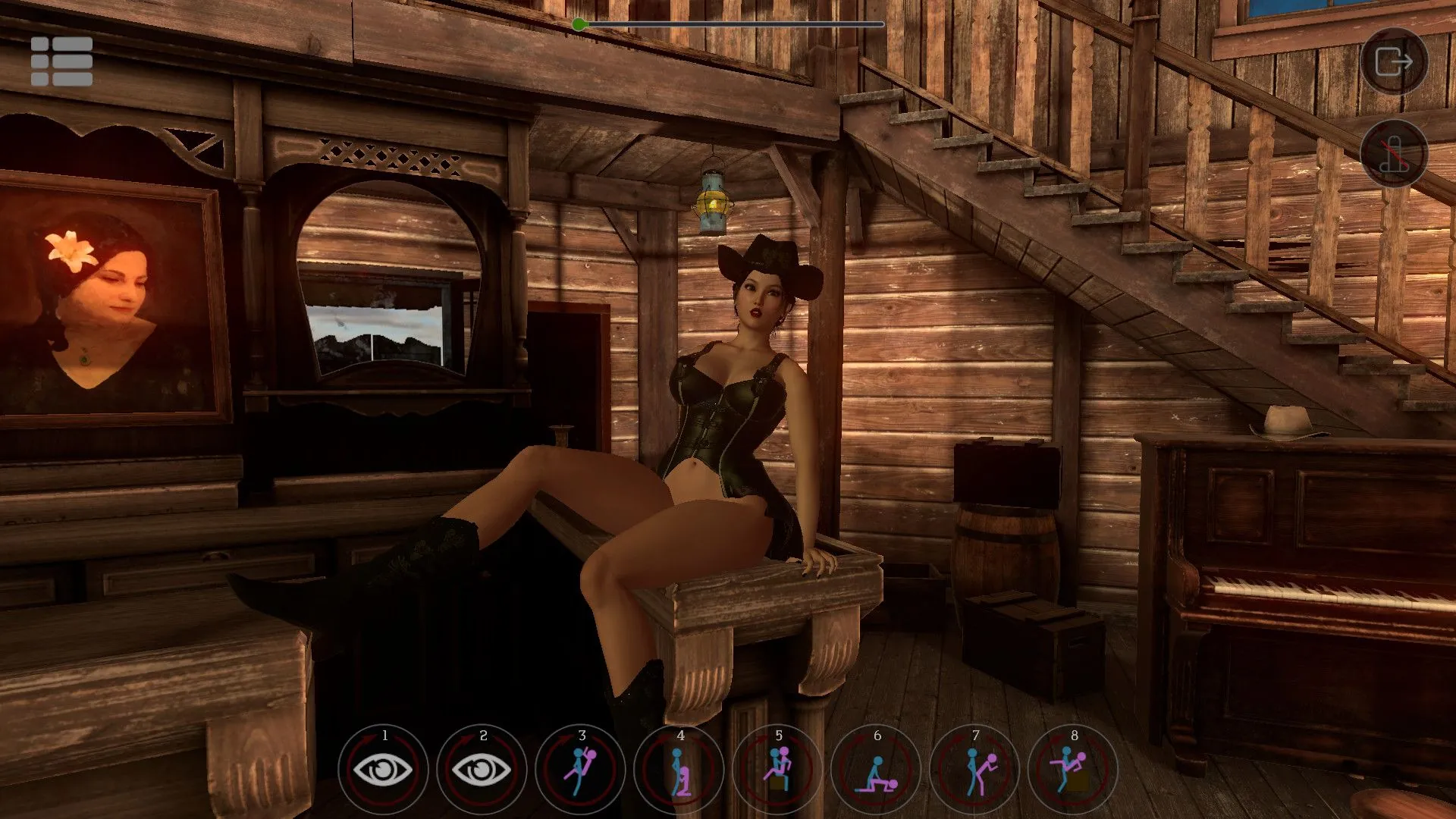
Long Story Short
Play Long Story Short
Long Story Short review
Explore the unique narrative and gameplay of Long Story Short visual novel
Long Story Short is an intriguing visual novel that blends high school drama with interactive storytelling, set across multiple timelines. This game invites players to dive into the protagonist’s life through anonymous chatroom conversations, revealing personal stories and choices that shape relationships and endings. If you’re curious about what makes Long Story Short stand out in the genre, this article offers a comprehensive exploration of its narrative, gameplay, and player experience.
Understanding Long Story Short: Narrative and Gameplay
What is Long Story Short About? 🤔
Let me paint you a picture. You’re scrolling through an anonymous chatroom, a digital confessional where people share pieces of their lives. One user, “Blu,” starts telling a story, and it’s yours. This is the brilliant hook of the Long Story Short game. You play as a character reflecting on their final year of high school, a time filled with the usual drama, friendships, and self-discovery. But here’s the twist: you’re reliving these memories while narrating them to a stranger online.
The Long Story Short story is a masterclass in dual-timeline narrative. In the past, you navigate the halls of high school, dealing with a close-knit group of friends, crushes, and the looming question of the future. In the present, you’re “Blu” in the chat, deciding how much of the truth to reveal and how to frame your past actions. This structure creates an incredible layer of meta-commentary. You’re not just making choices; you’re actively crafting the narrative of your own life for an audience. It turns the entire experience into a profound interactive storytelling game where you control both the past events and the present interpretation of them.
I remember one playthrough where I had my character act aloof and detached in the chatroom, trying to play off a past mistake as no big deal. The responses from the other user made me feel so seen and called out that I actually restarted the chapter. The game made me confront my own tendency to downplay my feelings, which was a surprisingly personal revelation. The Long Story Short visual novel isn’t just a story you watch; it’s one you actively reconcile with.
How Does the Gameplay Work? 🎮
If you’re new to visual novels, fear not! The mechanics of the Long Story Short gameplay are intuitive yet deeply impactful. At its heart, it’s all about the power of visual novel choices. You’ll spend your time reading through beautifully written dialogue and scenes, and at key moments, the game will present you with a decision. These aren’t just “be nice” or “be mean” options. They are nuanced, often reflecting internal conflict, memory bias, or the desire to present yourself in a certain light.
The most critical choices happen in two places: during the flashbacks and within the chatroom. In the past, your decisions directly shape your relationships and the path of the story. In the chat, you decide how to narrate those events. You can be honest, defensive, sarcastic, or evasive. This dual-layer of decision-making is what makes this multiple endings game so compelling. Your chatroom persona and your past actions are in a constant dialogue, and the ending you get is a direct result of that conversation.
The beauty is in the cause and effect. A small, seemingly insignificant choice to skip a study session can ripple outwards, affecting your friendships and even how you later describe that day to your chatroom confidant. It perfectly captures the “butterfly effect” of adolescence.
To give you a clearer idea of how your decisions branch out, here’s a breakdown:
| Your Choice Context | Example Decision | Potential Narrative Impact |
|---|---|---|
| High School Interaction | Choosing to confront a friend versus letting an issue slide. | Can determine the strength of that friendship later in the story and unlock unique reconciliation scenes. |
| Chatroom Narration | Admitting you were scared versus claiming you were angry. | Shapes the chatroom user’s perception of you and can lead to different advice, altering your emotional journey. |
| Dual-Timeline Alignment | Your actions in the past contradict your story in the chat. | Creates narrative tension and can lead to endings where you are called out on your inconsistencies or retreat from the chat. |
Key Features That Define the Experience ✨
After spending hours with this title, a few elements truly set it apart and cemented its place as one of my favorite narrative experiences. These are the pillars that define the Long Story Short game.
The Anonymous Chatroom is Your Conscience 💬
This isn’t just a gimmick; it’s the soul of the game. The chat interface is incredibly authentic, complete with typing indicators and realistic response times. The other user feels like a real person—sometimes supportive, sometimes challenging, but always engaging. This dynamic forces you to reflect on your own past in a way that typical visual novel choices don’t. You’re not just picking an option; you’re justifying your life to someone.
The Weight of Your “Visual Novel Choices” ⚖️
The game masterfully avoids clear “good” or “bad” endings. Instead, you get endings that feel true to the character you’ve built. Did you create a narrative of regret? Of acceptance? Of defiance? Your final scene in the chatroom will reflect that. This approach makes the Long Story Short visual novel immensely replayable. I’ve completed it three times, and each ending felt uniquely personal and emotionally resonant, a true hallmark of a great multiple endings game.
Pro Tip: Don’t try to “game” the system on your first playthrough. Go with your gut. The most authentic experience comes from reacting to the story as you would in real life, not from trying to hunt for a specific outcome.
Example of a Key Decision Point
Let me share a moment that stuck with me. Midway through the game, a friend organizes a party. In the past, you have to decide whether to attend or bail to finish a important project.
- The Choice: Go to the party to support your friend / Stay home and be responsible.
- The Immediate Consequence: If you go, you have a heartfelt conversation that deepens your bond. If you stay, you feel isolated but get your work done.
- The Ripple Effect: Later, in the chatroom, you’re asked about your regrets. If you went to the party, you might express happiness about that memory. If you stayed home, you might frame it as a moment you prioritized wrongly, or you might defend it as the “mature” choice. This single decision feeds into multiple relationship meters and influences the tone of your entire chat narrative, pushing you toward a specific cluster of endings.
Emotional Depth and Replayability 🔁
The Long Story Short story tackles universal themes of memory, truth, and growing up with a delicate hand. It understands that the stories we tell about ourselves are often the most important ones. Because the narrative is so tightly woven around your visual novel choices, no two playthroughs are exactly alike. You might focus on a different friendship, portray a different emotional arc, or discover a piece of dialogue you never saw before. This isn’t just a game you play once; it’s an experience you revisit to understand both the story and yourself a little better.
Ultimately, the Long Story Short gameplay loop of action and reflection creates a powerful, introspective journey. It’s a must-play for anyone who believes in the power of stories and wants to experience one of the most thoughtful interactive storytelling game titles available.
Long Story Short offers a compelling blend of narrative depth and interactive gameplay, allowing players to explore personal stories through meaningful choices. Its unique dual timeline structure and chatroom setting create an engaging experience that encourages replayability and emotional investment. Whether you’re a fan of visual novels or new to the genre, Long Story Short provides a memorable journey worth exploring. Dive into the game and discover how your decisions shape the story.





